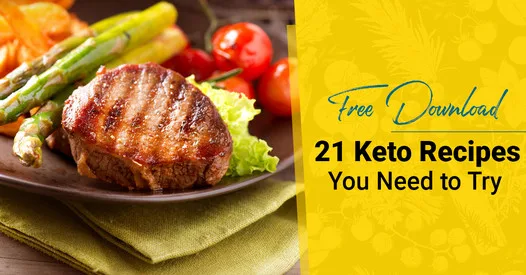Eager to shed those extra pounds or amp up your fitness routine? Just breathe easy because you’re about to be enlightened! “The Ultimate Guide to Modified Keto Diet” is the perfect compass directing you towards a healthier lifestyle. Unveiling all you need to know about the amended version of the celebrated Ketogenic diet, this guide highlights the tweaks you can adjust for this famous low-carb, high-fat regime, making it undoubtedly the most beneficial direction to proceed.

Understanding The Modified Keto Diet
Hey there! If you’ve found yourself here, chances are you’ve heard about the ketogenic diet and are interested in trying it out. But what exactly is the modified keto diet? Let’s delve into this intriguing dietary plan to make your journey towards a healthier lifestyle a bit more informed.
Definition of the Modified Keto Diet
The modified keto diet, as the name suggests, is an adjusted version of the standard ketogenic diet. It’s designed to help you enter a metabolic state known as ketosis, where your body primarily utilizes fat instead of carbohydrates for energy. This is achieved through a carefully controlled intake of macronutrients – generally lots of fats, a moderate amount of protein, and a limited quantity of carbs.
How it differs from the Standard Ketogenic Diet
So what sets the modified keto diet apart from the standard ketogenic diet? The main difference lies in the macronutrient ratio. While the standard ketogenic diet is very strict, requiring around 70-75% of your calorie intake from fats, 20-25% from protein, and only about 5-10% from carbs, the modified keto diet offers more flexibility. It usually allows for slightly higher carb and protein intake, making it potentially more sustainable for some people than the standard version.
The reasoning behind the modification
The modification is primarily designed to make the diet more manageable over the long-term, with a nutrition plan that is easier to maintain. It also caters to those who engage in high-intensity exercise and may need a bit more carbs and protein to fuel their workouts.
Types of Modified Keto Diets
So, there’s more than one type of modified keto diet. Exciting, right? From the high-protein keto diet to the targeted or cyclical keto diet, let’s take a brief trip into this world of modification.
Recognizing the different versions
The modified keto diet encompasses a few versions, each with their unique macronutrient distribution and fitness goals. It includes the high-protein keto diet, the targeted ketogenic diet (TKD), and the cyclical ketogenic diet (CKD).
Brief overview of each type
The high-protein ketogenic diet is great for those wanting to increase protein intake, perfect for bodybuilders and athletes. It typically includes around 35% protein, 60% fat, and 5% carbs.
Next, the targeted ketogenic diet, or TKD, is designed for those who lead an active lifestyle. It allows for carb consumption around workouts, optimizing performance while still promoting ketosis at other times.
Lastly, the Cyclical ketogenic diet, CKD, is the most flexible, involving periods of higher-carb intake, such as five ketogenic days followed by two high-carb days. It’s often preferred by athletes, bodybuilders, and those with demanding training schedules.
Pros and cons of each
Each of these diets has its benefits and drawbacks. The high-protein ketogenic diet, for instance, allows for building muscle mass but may make it harder to enter and maintain ketosis due to higher protein levels.
The TKD offers enhanced athletic performance but without careful timing, it might impede your goals of achieving ketosis.
The CKD, while providing more flexibility, requires careful planning and can be confusing to follow. It also could potentially lead to weight gain if the high carb days aren’t managed carefully.
Nutritional Composition of the Modified Keto Diet
Learning about the nutritional composition of this diet is crucial for success. Here, we’ll delve into how you should divide your macronutrients.
Breakdown on macronutrient ratios
While the exact percentages can vary based on the type of modified keto diet you’re following and your individual needs, a typical range might be 60-70% of calories from fat, 20-30% from protein, and 10-20% from carbs.
The importance of each nutrient in the diet
Fats, being the primary source of energy on this diet, are crucial to reach and maintain ketosis. Meanwhile, protein is essential to help prevent muscle loss and facilitate growth and repair. Carbs, though minimized, are also important for energy and should primarily come from whole food sources to maximize nutritional intake.
Effects of these nutrients on the body
Increased fat intake helps your body learn to burn fat for fuel, leading to potential weight loss. Limited carbs help maintain stable blood sugar levels and reduce insulin spikes, while adequate protein intake supports muscle growth and repair.
Benefits of the Modified Keto Diet
People choose the modified keto diet for various reasons, from weight loss to enhanced athletic performance and more.
Impact on Weight Loss
By encouraging your body to burn fat for fuel, the modified keto diet can lead to significant weight loss. It may also help you feel fuller longer, thus reducing overall calorie intake.
Boosting Physical Performance
For athletes and fitness enthusiasts, the modified keto diet can provide adequate energy to support high-intensity workouts, thanks to the provision for slightly higher carbs and proteins.
Improving Mental Health
There’s emerging evidence that the modified keto diet may improve mental health conditions like depression and anxiety by reducing inflammation and enhancing brain function.
Dealing with other Health Conditions
the diet may also be advantageous to manage health conditions such as epilepsy, diabetes, and certain types of cancer.

Downsides and Risks of the Modified Keto Diet
Like any diet, the modified keto diet isn’t without potential downsides and risks. It’s essential to weigh these against the benefits and decide if this diet is the right fit for you.
Possible Side Effects
Initial side effects of the diet can include fatigue, nausea, headaches, and confusio

